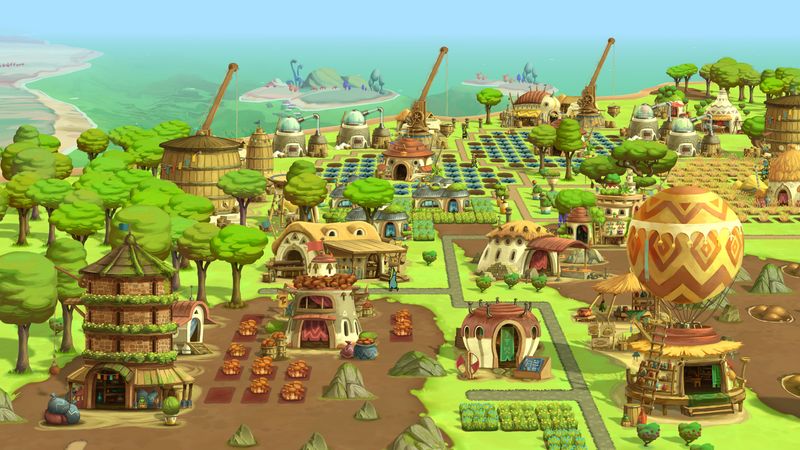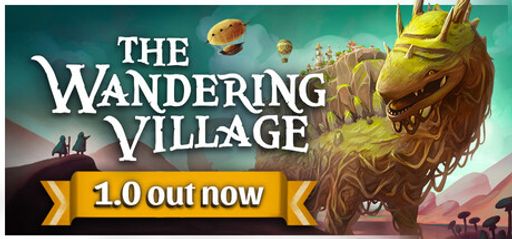Hey everyone! I finally spent some quality time with The Wandering Village and can’t wait to share my thoughts. This city-builder puts your settlement on the back of Onbu, a giant creature wandering through a poisonous, post-apocalyptic world. It’s a wild concept—and it works beautifully. Here’s what I loved, what didn’t quite land, and why it’s worth your time (and maybe your heart).
Overall Impressions
The hook is simple yet brilliant: your village lives on a living world. Onbu isn’t just scenery—it’s a partner. This connection adds emotion that most city sims lack.
Unlike many copy-paste builders, The Wandering Village feels personal. The learning curve is gentle, with clear tutorials and an easy start. For a challenge, modifiers open up deeper complexity. If you enjoy fine management, branching research trees, and unexpected events, you’ll find the perfect mix of chill and tense moments.

Gameplay Mechanics
Every run feels fresh thanks to randomized Onbu “maps.” Terrain shifts, creating new building spots and challenges. You’ll balance long-term planning—research, farming, and filtration—with quick reactions when spore clouds roll in.
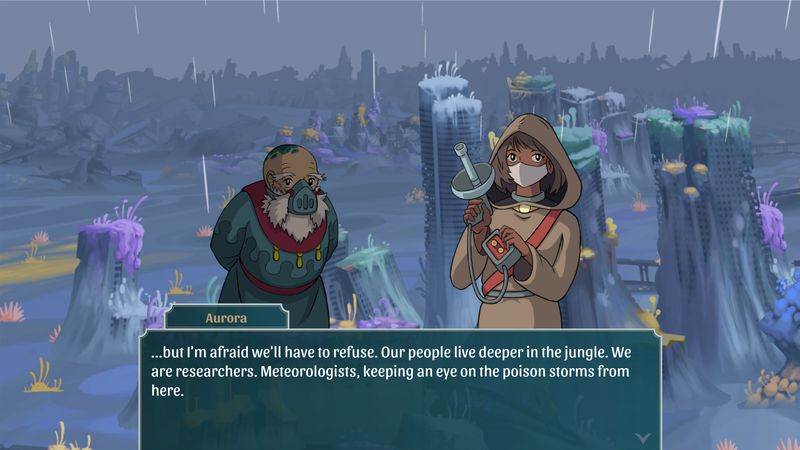
Difficulty modifiers boost replayability. You can enjoy a calm, scenic trip or test yourself with punishing, high-stakes settings.
One issue: subtle alerts can cause you to miss emergencies. Stronger visual or audio cues could help without breaking the calm atmosphere. As your village grows, juggling food, housing, and filtration can get hectic. Problems sometimes snowball faster than the systems allow.
Standout moment: My first night-time spore blast—villagers rushing, lights flashing, and me yelling, “Save Onbu!” It was tense but still cozy.
Story and Characters
The story unfolds through a mix of lore-flavored events and a more structured story mode that Stray Fawn added after launch. You learn about the world’s past plague, glimpses of how Onbu came to be, and even unlock little story arcs tied to your research.

Villagers have names, tiny personality quirks, and needs beyond “harvest wood.” I loved watching them interact, especially during festivals that boost morale or when they gather around for a concert held by a roaming musician. They’re not voice-acted but have delightful, expressive chatter sounds that make the world feel alive.
Visuals and Graphics
If you’re a sucker for Studio Ghibli vibes (think Nausicaä’s landscapes or Castle in the Sky’s floating islands), you’ll be in heaven. Every building comes in a handful of variants—no “see one hut, see them all” here. The pastel color palette grows darker when things get tense, and Onbu’s shifting back patterns look gorgeous in motion. Sprite work is detailed, and even the tiniest villager feels distinct.
Sound and Music
The soundtrack is a standout for me—warm, melodic, and at times haunting. It shifts perfectly between peaceful mornings and tense spore outbreaks. Simple sound effects (wood chopping, water filtration humming, distant roars from Onbu) pull you into the world without ever feeling overwhelming. No big voice-over cast here, but you honestly don’t miss it.

Difficulty and Replayability
You can pick from easy, medium, hard, and then sprinkle on extras like faster spore growth or tougher weather. If you defeat a run, you unlock harder modifiers for future attempts, making each playthrough feel fresh. Many players praised its “easy to learn, tricky to master” vibe, and I agree—once you understand the basics, you’ll find yourself chasing higher challenge badges. I’m already plotting a “nightmare” run just to see if I can keep Onbu happy under maximum pressure.
Behind the Scenes & Trivia
Stray Fawn’s latest release is the result of a five-year development journey fueled by a dedicated community. Kickstarter backers not only beta-tested but also witnessed the game’s transformation from early concept to polished launch, with every stretch goal achieved. True to their community-first approach, the developers have already delivered free updates and teased future additions like mod support, richer Onbu wildlife, and cozy recreational areas for villagers to relax—ensuring the adventure continues to grow.
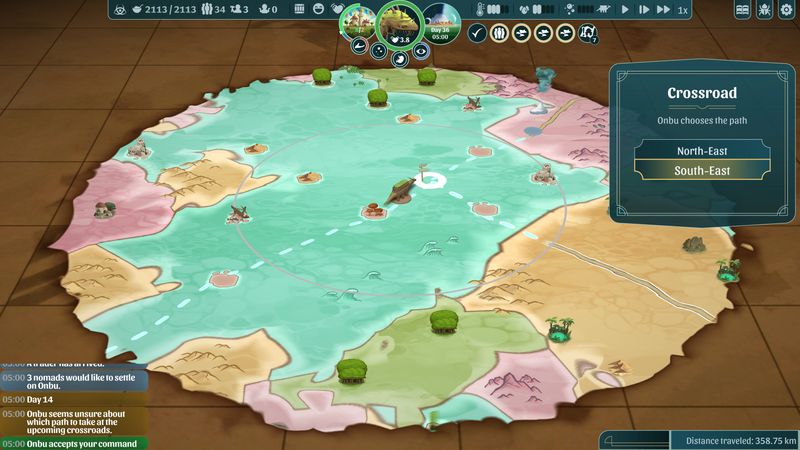
Final Thoughts
The Wandering Village isn’t just another city builder—it’s a cozy, living ecosystem wrapped in a post-apocalyptic shell. It has its rough edges (I do wish alerts were bolder and management a tad smoother), but the emotional bond you form with Onbu, the delight of each randomized run, and the Ghibli-inspired art style more than make up for those small hiccups. Whether you’re new to city sims or a veteran looking for something fresh and heartfelt, this one deserves a spot on your wishlist.
Rating: 4.5 out of 5 stars
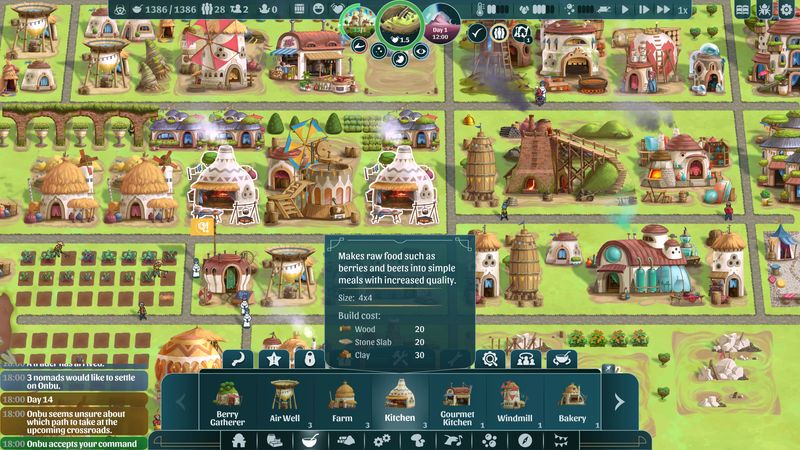
Pros
This game’s standout feature is its unique living-map system centered on Onbu, offering an ever-changing world to explore. The Ghibli-inspired art style delivers stunning visuals, while deep yet approachable gameplay ensures both new and seasoned players feel at home. Flexible difficulty settings and high replay value keep runs engaging, all enhanced by a fantastic, immersive soundtrack.
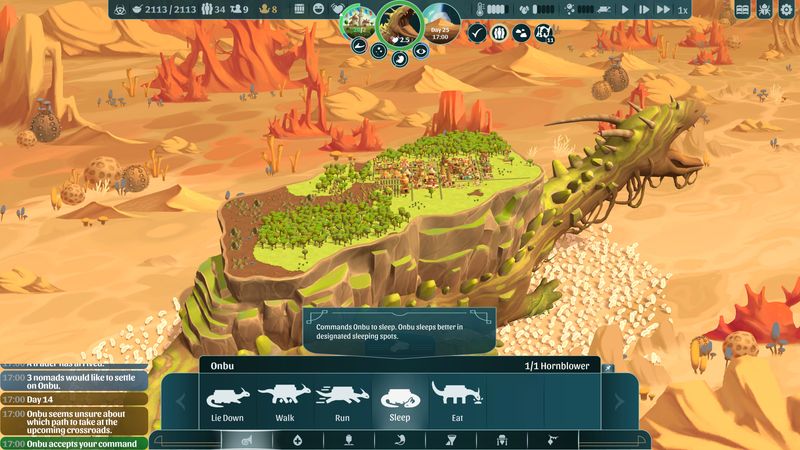
Cons
Crisis notifications can be a bit too subtle, making it easy to miss urgent issues until they escalate. Additionally, as your settlement grows, moments of intense micromanagement can create a sudden rush, briefly interrupting the otherwise smooth and relaxing flow.
That’s my two cents! Hope this helps you decide if you want to build your own floating village and befriend a giant creature. Until next time, happy gaming!
